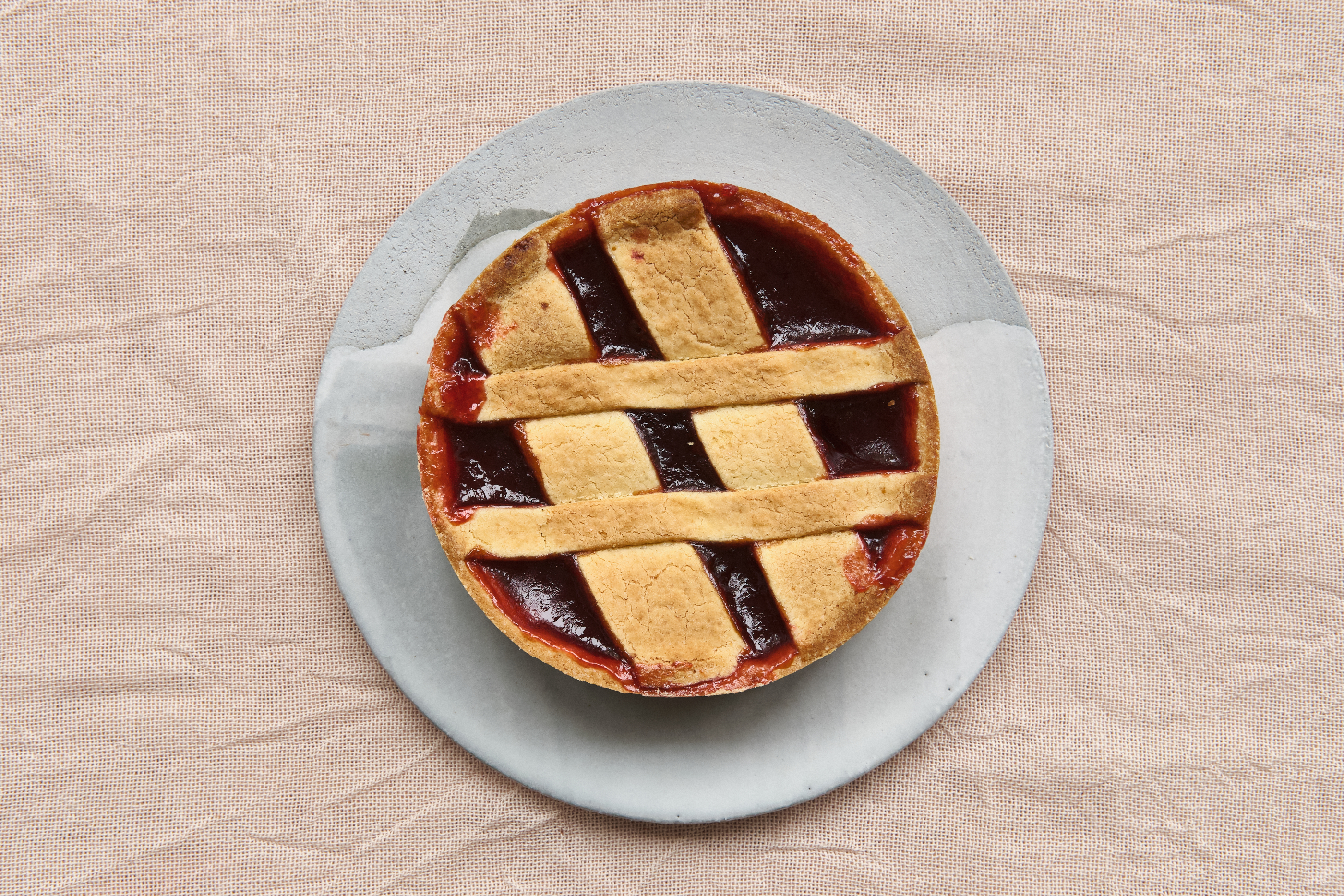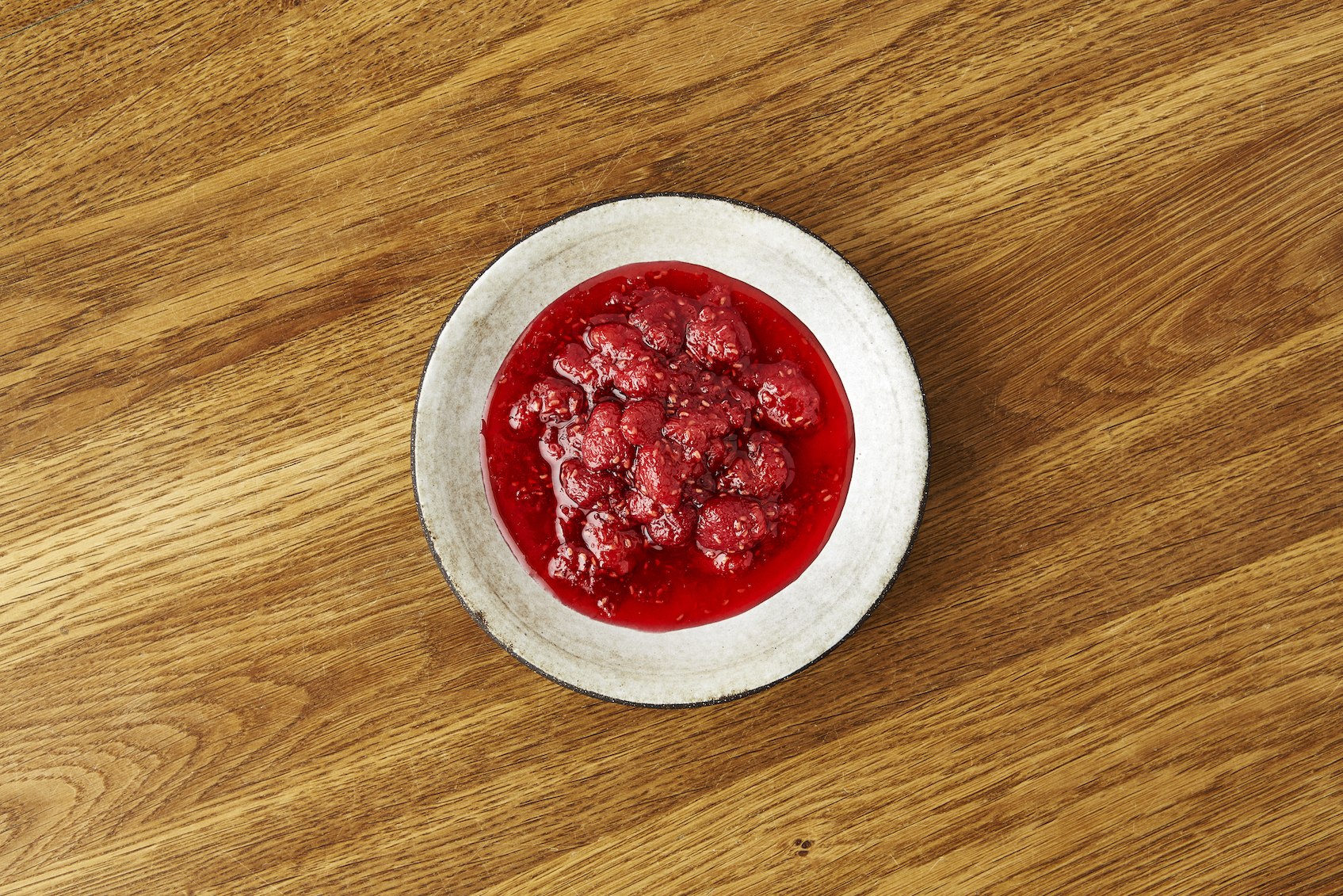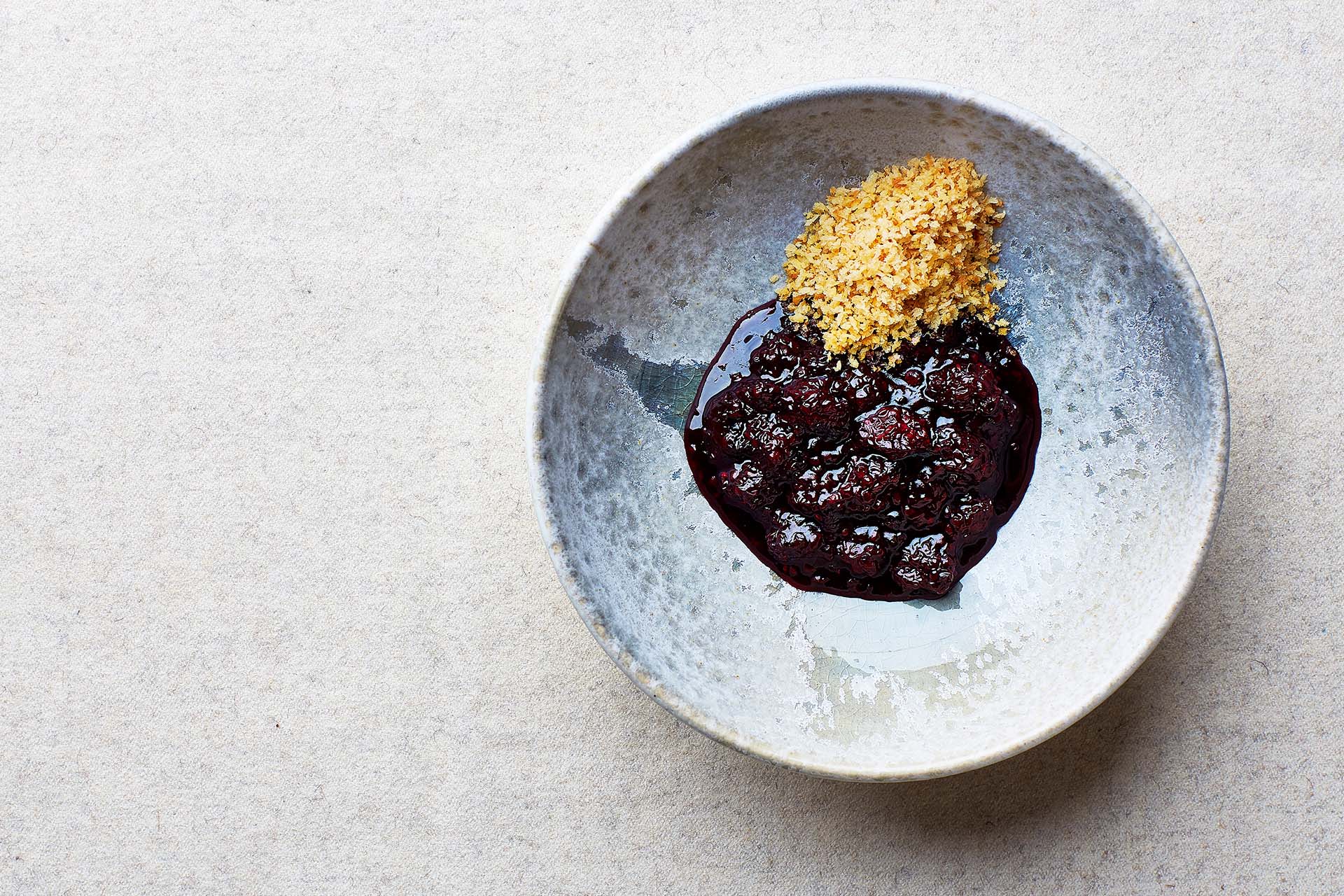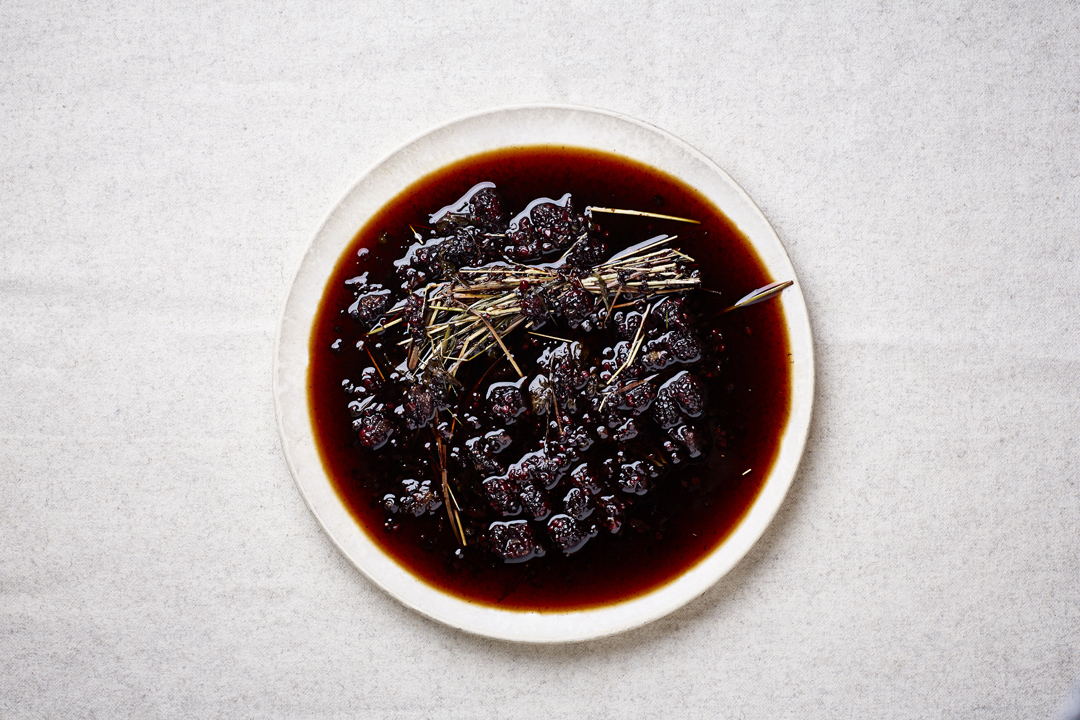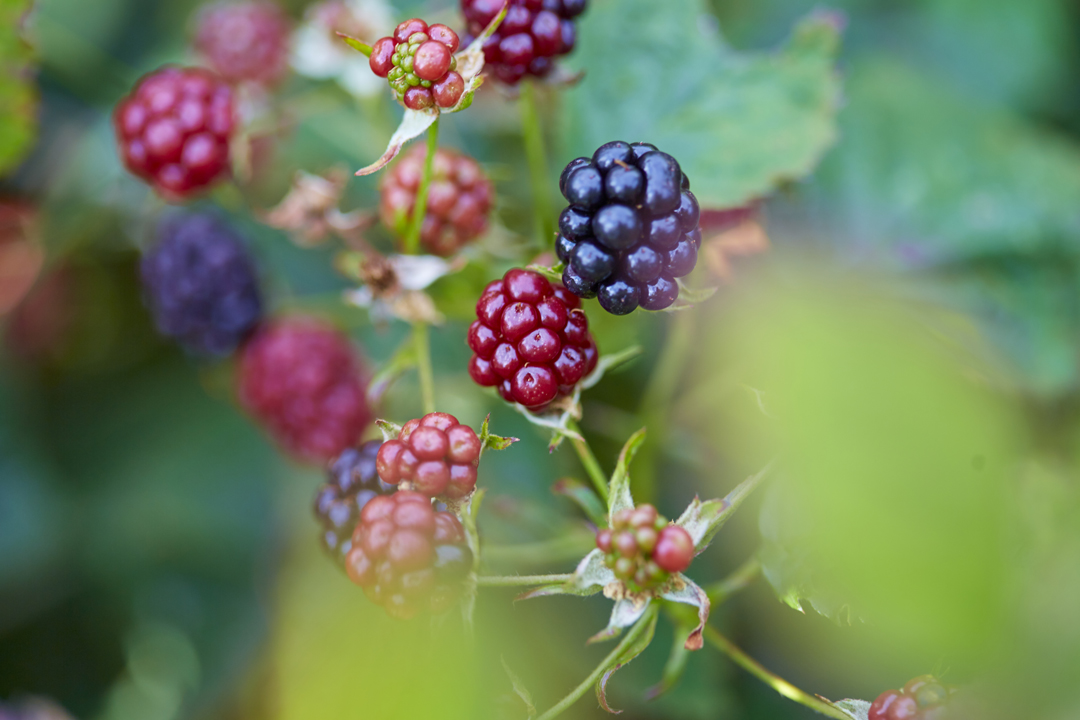
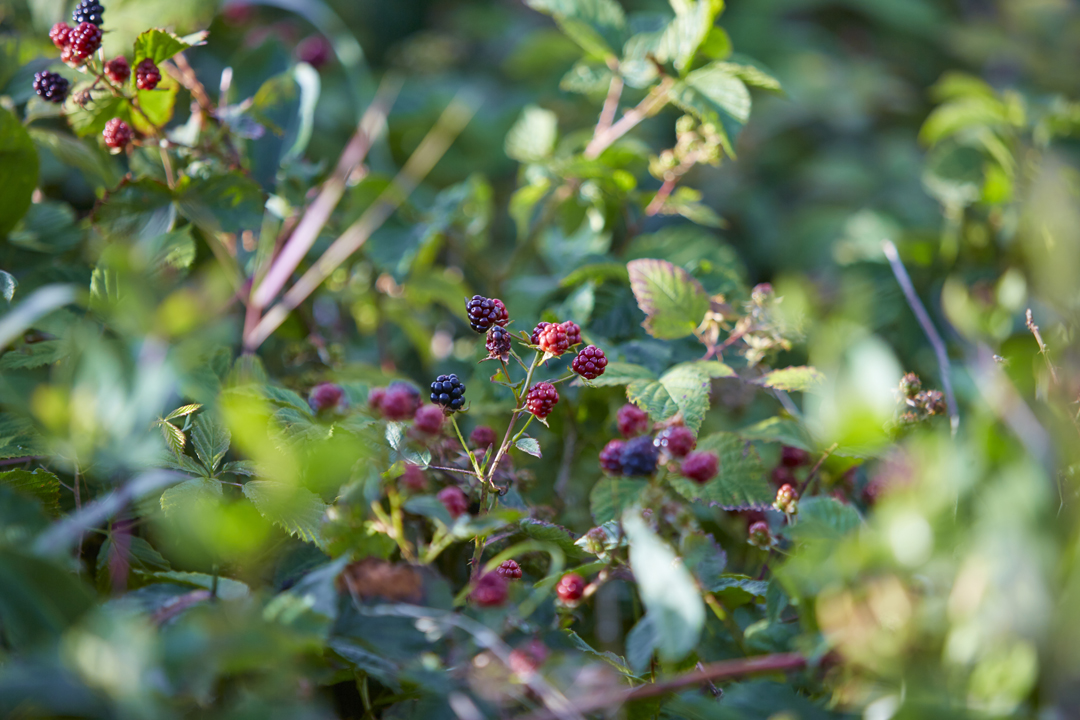
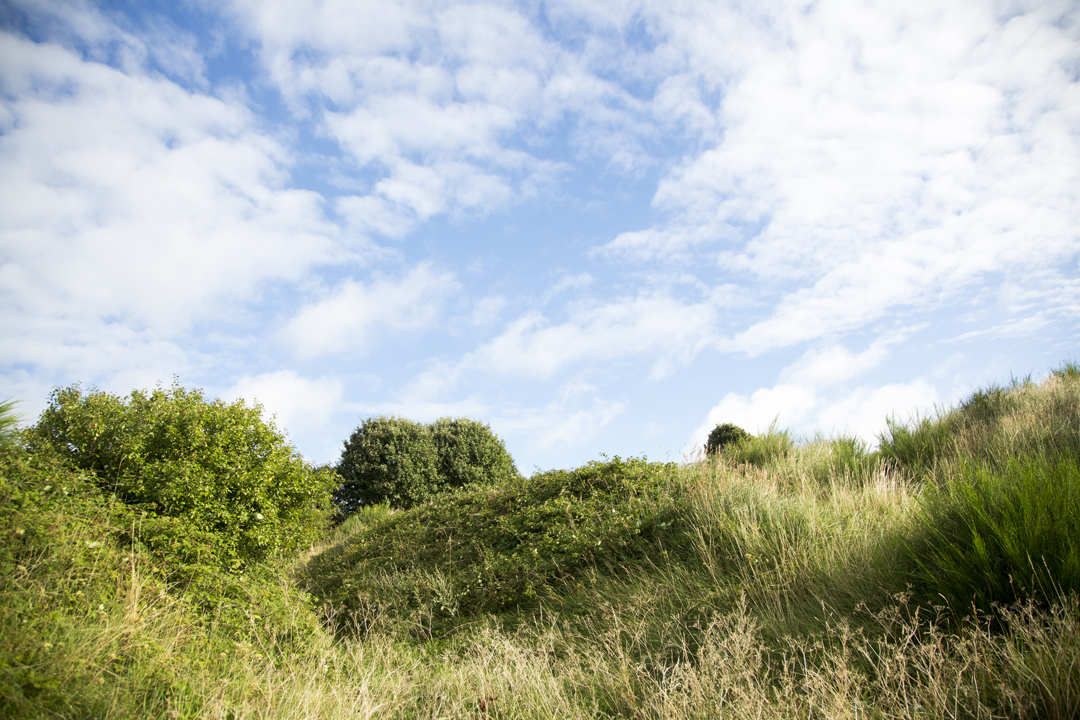
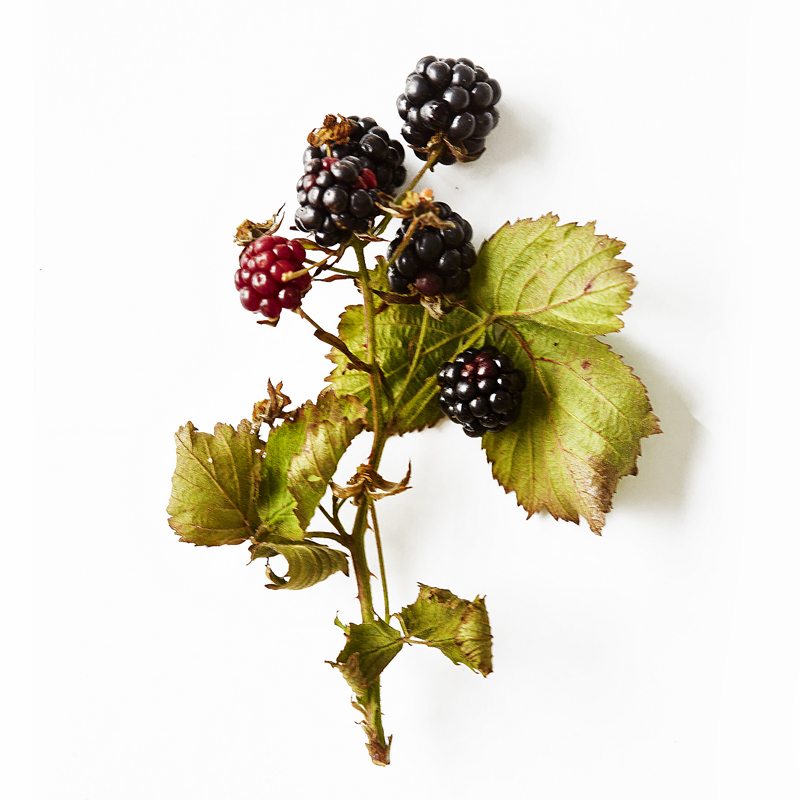
Blackberry
There are close to one hundred varieties of blackberries in Denmark—and they all taste and look different. For the sake of clarity, we call them all blackberries, but do yourself a favor and pick from several different places to get a feel for the breadth of the species.
-
Where to Find It
Blackberries grow wild in deciduous and coniferous forests, at the edge of woods, in pastures, hedges, and copses. Some types of blackberries thrive best in moist environments, while others prefer drier surroundings. The plant is very common, especially in the eastern part of Denmark.
Salt marshes, deciduous forests, coniferous forests, towns, hedges, roadsides, grasslands. -
When to Find It
You can normally pick blackberries from July until October, but you'll find the greatest quantities in August and September.
Berries: July, August, September, October.
-
How to Spot It
Blackberries grow on long green vines that shoot up from the ground in thorny tangles. The plant has dark green leaves with whitish undersides and small thorns. It blooms in June and July with light pink flowers and that give way to berries that grow in dense clusters. Unripe blackberries are green, but gradually they turn first red and then—once fully ripened—black and juicy.
-
How to Pick It
Remember to put on a good pair of gloves and clothing that covers you well when you pick blackberries—the thorns on the plant are very sharp. Most people pick berries when they are dark red or black, but the green unripe fruits are also edible. It's best to pick ripe berries in dry weather since collecting in the rain tends to make the fruit watery and mushy. As a rule, the first berries of the season are the best—the biggest and sweetest. You can help the blackberry plant grow more lushly by removing dead shoots from the plant as you pick.
Risk of misidentifying the plant
There is no risk of mistaking the plant for another dangerous plant, but you might confuse blackberries and dewberries. The dewberry plant doesn't get as big as the and has smaller thorns, and it doesn’t have the blackberry’s characteristically flexible vines. Dewberries are edible, but they lack blackberries sweet complexity. The two plants have crossbred prodigiously (along with raspberries), so it’s not unusual to happen upon these hybrids in the forest. Boysenberries, which look like overgrown blackberries, are one of these hybrids, but their flavor isn’t as interesting.


